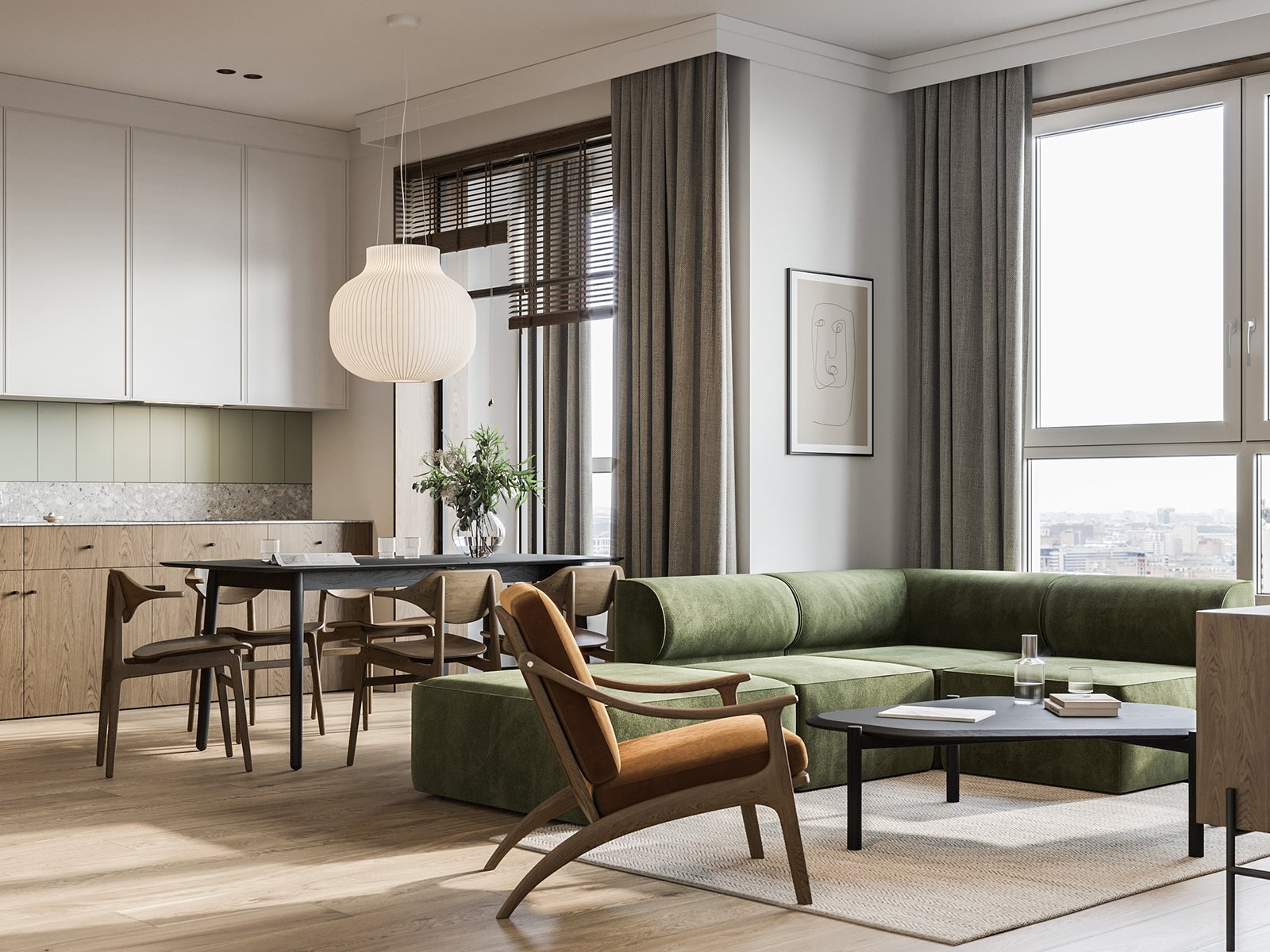1. Design an ergonomic layout
When the layout not only takes your wishes into account, but also complies with all design rules and regulations, this is the key to long-term comfort.
Consulting a professional can help optimize your space based on your habits and daily activities, maximizing efficiency.

2. Hide all unnecessary items
The less furniture and other items are visible in a room, the more ‘airy’ and comfortable it is. Remove anything unnecessary, hide it in cupboards or wardrobes.
To achieve an even more airy effect, use built-in storage systems. The fewer details, the better this approach works, which is becoming increasingly popular. You can make the handles of such cupboards hidden or use simple linear shapes.




3. Implement Versatile Lighting
Different lighting scenarios cater to various needs: reading before bed, ambient lighting for the living room, or multiple wall sconces for convenience. Plan for multiple lighting options in each room, including recessed lights, floor lamps, and table lamps.
Instead of a central ceiling light, consider recessed or linear fixtures for a contemporary touch. Dimmer switches allow for adjustable brightness, enhancing flexibility.



4. Choose Natural Materials
Natural materials, such as wood and marble, provide timeless appeal and tactile comfort. Use them in furniture and flooring – parquet for living areas and stone for kitchens and bathrooms.


5. Opt for Light Finishes
A light base allows for easy customization with accents and contrast elements. Avoid stark white, as it has fallen out of favor; instead, choose warmer tones like ivory, cream, or shell. Scandinavian design, known for its lightness and simplicity, remains a reliable source of inspiration. Add warmth with soft textiles like cushions, throws, and blankets.


6. Incorporate Easily Replaceable Decorative Elements
A well-designed interior always benefits from striking details – accents are essential. To stay on trend, integrate color into your décor through wall art, posters, vases, or textiles. Opt for simple shapes, as minimalism and austere design will continue to be in demand.
The advantage of decorative elements is their versatility – you can switch up colors whenever you like. The key is to ensure these accents subtly stand out within the overall color scheme. This approach enhances the space’s visual appeal, making it more dynamic and aesthetically pleasing.




